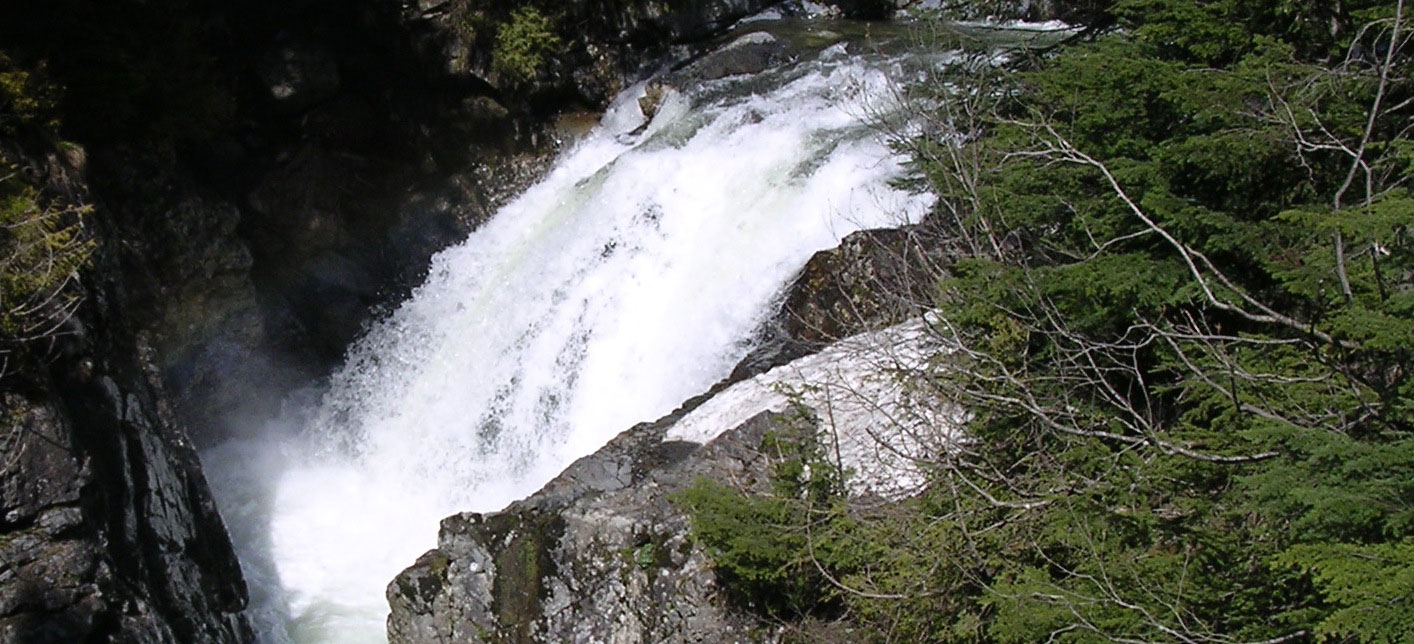In this Section: Chapter 1 Chapter 2 Chapter 3 Chapter 4 Chapter 5 Group Activity 1 Group Presentations 1 Chapter 6 Chapter 7 Chapter 8 Chapter 9 Group Activity 2 Group Presentations 2 Chapter 10 Chapter 11 Chapter 12 Chapter 13 Chapter 14 Chapter 15 Group Activity 3 Group Presentations 3 Chapter 16 Chapter 17 Chapter 18 Chapter 19 Chapter 20 Chapter 21
Chapter 3
Forest Hydrology- Evapotranspiration
Outline:
- Evaporation as a component in the watershed water balance
- Energy balance for a generic point
- Forest energy balance
- Penman-Monteith equation
- Large eddy simulation of vapor and heat tranport through and above a forest
Course Reader:
- "FAO Penman-Monteith equation". In: Allen, R. G., Pereira, L. S., Raes, D., Smith, M. (Eds.). Crop evapotranspiration - Guidelines for computing crop water requirements. FAO Irrigation and drainage paper 56. http://www.fao.org/3/X0490E/x0490e00.htm#Contents
Introductory ET web links:
- What is evapotranspiration?
- Importance of evapotranspiration
- Detailed explanation of transpiration
- How the stomata and guard cells work
ET measurement related web links:
Penmen-Monteith web link:
Video Podcast: Forest Hydrology- Evapotranspiration, part 1
This 25-minute presentation introduces energy balance concept at watershed scale and conceptualizes evaporation, transpiration, and sap flow.
- 640 x 480 (480p) format that balances speed and quality. (225 MB file)
- 1920 x 1280 (HD) format that provides larges size and best quality. (1.3 GB file)
Errata
On slide 2, I want to be clear that the terms "SM" and "depression storage" come into the water balance to the extent that they are changing. The left side of the equation is show influx and the right side outflux. Soil moisure storage and depression storage in and of themselves are not fluxes. It is when they change that there is a flux. Sometime they will go up and other times down. It is the addition or loss of water that is in the equation, not the storage itself.
On slide 25, there is an internet link to get to the online PM calculator. That link has changed. The new link is http://www.geos.ed.ac.uk/homes/rclement/micromet/java/netpmont.html. Because this tool uses Java, some browsers block its use as a security risk, so it may not work for you if your browsers settings prevent it.
Video Podcast: Forest Hydrology- Evapotranspiration, part 2
This 35-minute presentation works through the Penmen-Monteith (PM) equation and explains the terms in it, illustrate ecohydrologic processes with the PM equation, and introduces atmospheric boundary layer water and heat flux concepts.
NOTE: the content beginning at slide 3-29 is optional. It will not be on any test or assignment. This optional content begins at 31 min 32 sec into the video.
- 640 x 480 (480p) format that balances speed and quality. (352 MB file)
- 1920 x 1280 (HD) format that provides larges size and best quality. (1.57 GB file)
In this Section: Chapter 1 Chapter 2 Chapter 3 Chapter 4 Chapter 5 Group Activity 1 Group Presentations 1 Chapter 6 Chapter 7 Chapter 8 Chapter 9 Group Activity 2 Group Presentations 2 Chapter 10 Chapter 11 Chapter 12 Chapter 13 Chapter 14 Chapter 15 Group Activity 3 Group Presentations 3 Chapter 16 Chapter 17 Chapter 18 Chapter 19 Chapter 20 Chapter 21


